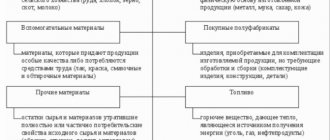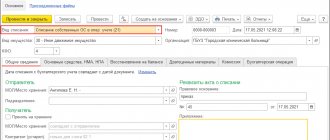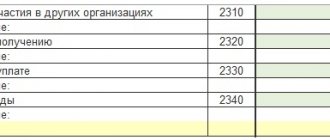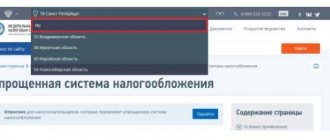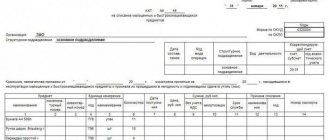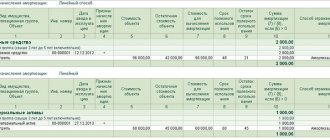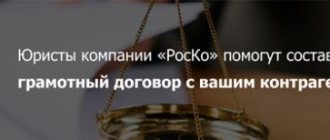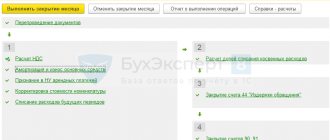Accounting: inseparable and separable improvements
Inseparable and separable improvements to gratuitously used property should be reflected in accounting and taxation in the same way as improvements to leased property. This is due to the fact that in civil legislation uniform rules apply to them (clause 2 of Article 689 and clauses 1, 3 of Article 623 of the Civil Code of the Russian Federation). Therefore, they should be reflected in accounting uniformly. For example, the cost of improvements that remain the property of the borrower and related to fixed assets is repaid in accounting by calculating depreciation (clause 17 of PBU 6/01).
For more information about this, see How a lessee should account for expenses for inseparable improvements to leased property and How for a lessee to account for expenses for separable improvements to leased property.
Documenting
Document the fact of receipt (return) of property with a document in any form, since there is no unified form for this. The main thing is that it contains all the mandatory details listed in Part 2 of Article 9 of the Law of December 6, 2011 No. 402-FZ. For example, when receiving property, draw up an act of acceptance and transfer of property for free use. This procedure follows from Part 1 of Article 9 of the Law of December 6, 2011 No. 402-FZ.
For the received fixed asset, you can open a separate inventory card of form No. OS-6, approved by Decree of the State Statistics Committee of Russia dated January 21, 2003 No. 7. In this case, to account for the received property, you can use the inventory numbers assigned to it by the lender himself. This is stated in paragraph 14 of the Methodological Instructions, approved by order of the Ministry of Finance of Russia dated October 13, 2003 No. 91n. (Despite the fact that this rule applies when receiving property for rent, it can (but not necessarily) be used to organize accounting when receiving property on loan, since these transactions are largely similar.)
Property received for free use should be reflected on the balance sheet. The Chart of Accounts does not provide for a special account to reflect property received free of charge. Therefore, the organization has the right:
- or independently open a new off-balance sheet account, securing it in the working Chart of Accounts. For example, this could be account 012 “Property received for free use”;
- or use an off-balance sheet account to account for leased fixed assets - 001 “Leased fixed assets”, since the lease agreement and the agreement for gratuitous use are in many ways similar.
Accounting: receiving property
When receiving the property, make the following entries:
Debit 001 (012) – property received under a loan agreement.
Reflect the return of property as follows:
Loan 001 (012) – property was returned to the lender.
This procedure follows from paragraph 21 of the Methodological Instructions, approved by order of the Ministry of Finance of Russia dated October 13, 2003 No. 91n, Instructions for the chart of accounts, paragraph 4 of PBU 1/2008 and is confirmed by letter of the Ministry of Finance of the Russian Federation dated March 23, 2001 No. 04-02-05 /3/11.
The value of the property received for free use should be indicated in the valuation recorded in the contract. This is stated in the Instructions for the chart of accounts. (Despite the fact that this rule applies when receiving property for rent, it can (but not necessarily) be used to organize accounting when receiving property on loan, since these transactions are largely similar.)
The borrower does not charge depreciation on property received for free use. If necessary, this continues to be done by the owner of the assets - the lender. This follows from paragraph 49 of the Methodological Instructions, approved by Order of the Ministry of Finance of Russia dated October 13, 2003 No. 91n.
Accounting: property maintenance costs
The responsibility for maintaining the property in good condition (including carrying out current and major repairs) rests with the borrower, unless otherwise provided by the agreement for gratuitous use (Article 695 of the Civil Code of the Russian Federation). Costs for maintaining property in good condition are expenses for ordinary activities. In accounting, reflect such expenses with the following entries:
Debit 20 (23, 25, 26, 29, 44...) Credit 10 (60, 69, 70, 76...) - reflects the costs of maintaining property received for free use in good condition.
This follows from paragraphs 5, 7, 11 and 16 of PBU 10/99 and the Instructions for the chart of accounts.
An example of reflecting in accounting the receipt, maintenance and return of property received for free use
In July, Alpha LLC received premises for free use. According to the loan agreement, the premises are valued at 1,000,000 rubles. The costs of its maintenance are assigned to Alpha.
In the same month, Alpha carried out routine repairs to the premises. Repair costs amounted to RUB 100,000, including:
- services of a third party for repairs – RUB 35,400. (including VAT – 5400 rub.);
- the cost of own materials used in repairs is RUB 51,980.
In September, the contract was terminated at the request of Alpha.
The Alpha accountant uses account 001 “Leased fixed assets” to account for property received free of charge.
The accountant reflected the operations for receiving and carrying out repairs as follows.
In July:
Debit 001 – 1,000,000 rub. – premises were received under a loan agreement;
Debit 26 Credit 60 – 30,000 rub. – reflects the cost of services of a third-party organization performing repairs to the premises;
Debit 26 Credit 10 – 51,980 rub. – materials for repairs of the premises were written off;
Debit 19 Credit 60 – 5400 rub. – reflects input VAT on services provided by a third party.
In September:
Loan 001 – 1,000,000 rub. – the premises received under the loan agreement were returned.
